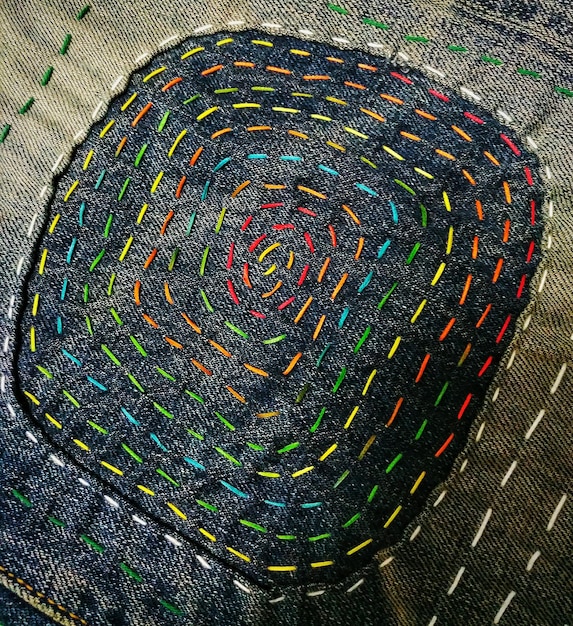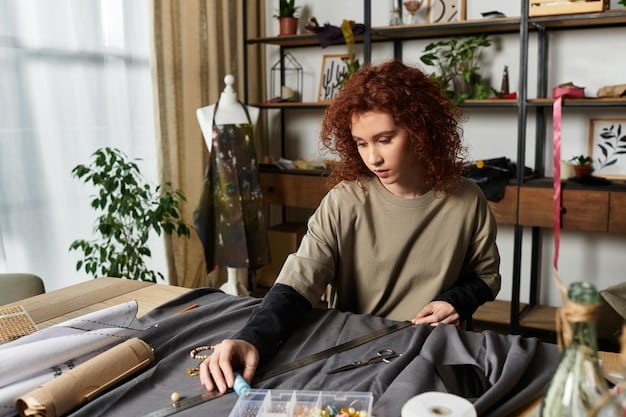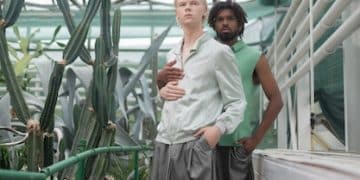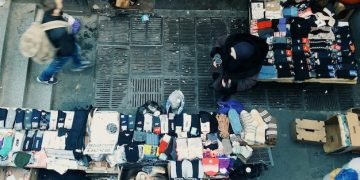Underground Fashion: A Sustainable Alternative to Fast Fashion

Underground fashion presents a sustainable and creative alternative to fast fashion, emphasizing individuality, ethical production, and unique style expressions beyond mainstream trends.
The fast fashion industry, with its mass-produced, trend-driven clothing, has significant environmental and social costs. As a response, **underground fashion** emerges as a powerful movement, offering a sustainable and ethical alternative. But what exactly defines underground fashion, and how does it challenge the status quo? Let’s dive in.
Understanding Underground Fashion
Underground fashion isn’t just about wearing obscure clothing; it’s a cultural phenomenon that prioritizes creativity, sustainability, and individual expression over fleeting trends. It encompasses a broad spectrum of styles and subcultures, each with its unique aesthetic and ethos.
Defining Characteristics
Several key factors differentiate underground fashion from mainstream trends. It’s less about following prescribed styles and more about creating a personal narrative through clothing.
- Individuality: Embracing unique styles and rejecting mass-produced looks is central.
- Sustainability: Prioritizing eco-friendly materials, recycled clothing, and ethical production methods.
- Creativity: Showcasing innovative designs and DIY approaches.
- Community: Fostering connections among like-minded individuals through events and shared values.
Underground fashion often intersects with various subcultures, creating a diverse and dynamic landscape.

The Problems With Fast Fashion
The rise of fast fashion has led to a variety of pressing ethical and environmental concerns. Understanding these issues is crucial to appreciating the importance of alternatives like underground fashion.
Environmental Impact
Fast fashion’s rapid production cycles and disposable products contribute significantly to environmental degradation. From resource depletion to pollution, the industry has a substantial footprint.
- Water Usage: Textile production requires vast amounts of water, leading to water scarcity in some regions.
- Pollution: Dyeing processes often release harmful chemicals into waterways.
- Waste: Millions of tons of clothing end up in landfills each year, contributing to environmental pollution.
Social and Ethical Concerns
Beyond environmental impact, fast fashion also raises significant ethical issues related to labor practices and worker welfare.
Reports of unsafe working conditions, low wages, and exploitation are common in fast fashion factories. By embracing underground fashion, consumers can support brands and designers committed to fair labor practices.
Underground Fashion as a Solution
Underground fashion offers a refreshing alternative to the problems associated with fast fashion. By prioritizing sustainability, creativity, and ethical production, it presents a pathway toward a more responsible and fulfilling approach to clothing.
Sustainable Practices
Many underground fashion brands and designers are committed to eco-friendly practices. This includes using organic or recycled materials, reducing waste, and minimizing their carbon footprint.
Upcycling is a common theme, where designers transform used clothing into new, fashionable pieces. This not only reduces waste but also creates unique, one-of-a-kind items.

Key Elements of Underground Fashion
The beauty of underground fashion lies in its diversity and adaptability. There is no single “look” or style that defines it. Rather, it’s a collection of approaches that share a common thread.
DIY Culture
Do-it-yourself (DIY) culture is strong in underground fashion. Many enthusiasts create their own clothing or modify existing items to reflect their unique style.
Customization through patches, embroidery, and alterations is also popular. This allows individuals to express their creativity and make their clothing truly unique.
Vintage and Secondhand Clothing
Sourcing vintage and secondhand clothing is a common practice in underground fashion. This not only reduces waste but also allows for discovering unique and timeless pieces.
Thrift stores, flea markets, and online marketplaces are all great sources for finding vintage and secondhand clothing. This approach supports circular economy principles and reduces the demand for new products.
Finding Your Style in Underground Fashion
One of the rewarding aspects of exploring underground fashion is the opportunity to define your own style. This involves experimentation, self-expression, and embracing what resonates with you.
Don’t be afraid to mix and match different styles and elements. Combine vintage finds, DIY creations, and ethically sourced items to create a look that is authentically you.
Building a Sustainable Wardrobe
Creating a sustainable wardrobe is a cornerstone of underground fashion. This involves making conscious choices about the clothing you buy and how you care for it.
- Choose quality over quantity: Invest in well-made pieces that will last longer.
- Care for your clothing: Proper washing and storage can extend the life of your garments.
- Repair and repurpose: Learn basic sewing skills to mend and alter clothing.
By following these steps, you can create a sustainable wardrobe that reflects your personal style and values.
The Future of Underground Fashion
The future of underground fashion is bright. As awareness of the negative impacts of fast fashion grows, more consumers are seeking alternatives that align with their values.
Underground fashion is poised to play a significant role in shaping the future of the industry. By promoting creativity, sustainability, and ethical production, it challenges the status quo and empowers individuals to express themselves authentically.
| Key Aspect | Brief Description |
|---|---|
| ♻️ Sustainability Focus | Prioritizes eco-friendly materials and ethical production. |
| 🎨 DIY and Customization | Emphasizes personal creativity through clothing modifications. |
| 👕 Vintage and Secondhand | Incorporates pre-owned items to reduce waste and promote circularity. |
| 🤝 Community Spirit | Fosters connections among like-minded individuals. |
FAQ
Underground fashion is a movement emphasizing individuality, sustainability, and creativity. It’s an alternative to fast fashion’s mass-produced, trend-driven model, focusing on unique styles and ethical practices.
It addresses sustainability using recycled materials, upcycling, and ethical production. Brands often focus on minimizing waste and reducing their environmental footprint through conscious practices.
DIY culture is central, with many creating clothing or modifying existing items. Customization with patches and embroidery allows for personal creativity, emphasizing unique styles.
You can find pieces in vintage stores, thrift shops, online marketplaces, and from independent designers. Look for unique, ethically sourced, and sustainably made items to support the movement.
It’s important because it offers a reaction to the fast fashion industry, providing a sustainable and ethical alternative that encourages unique expression, supporting responsible consumption, and fostering community.
Conclusion
As consumers increasingly seek sustainable and ethical options, underground fashion stands as a compelling alternative within the fashion industry. By embracing creativity, individuality, and responsible practices, this movement is not just a trend but a vital step toward a more sustainable and expressive future.





